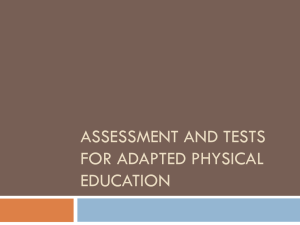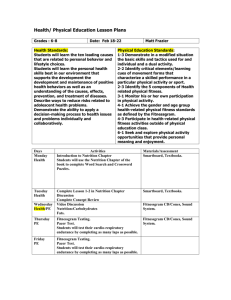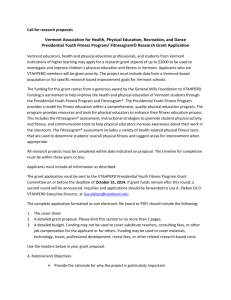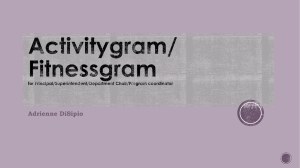RONALD REAGAN ELEMENTARY SCHOOL
advertisement
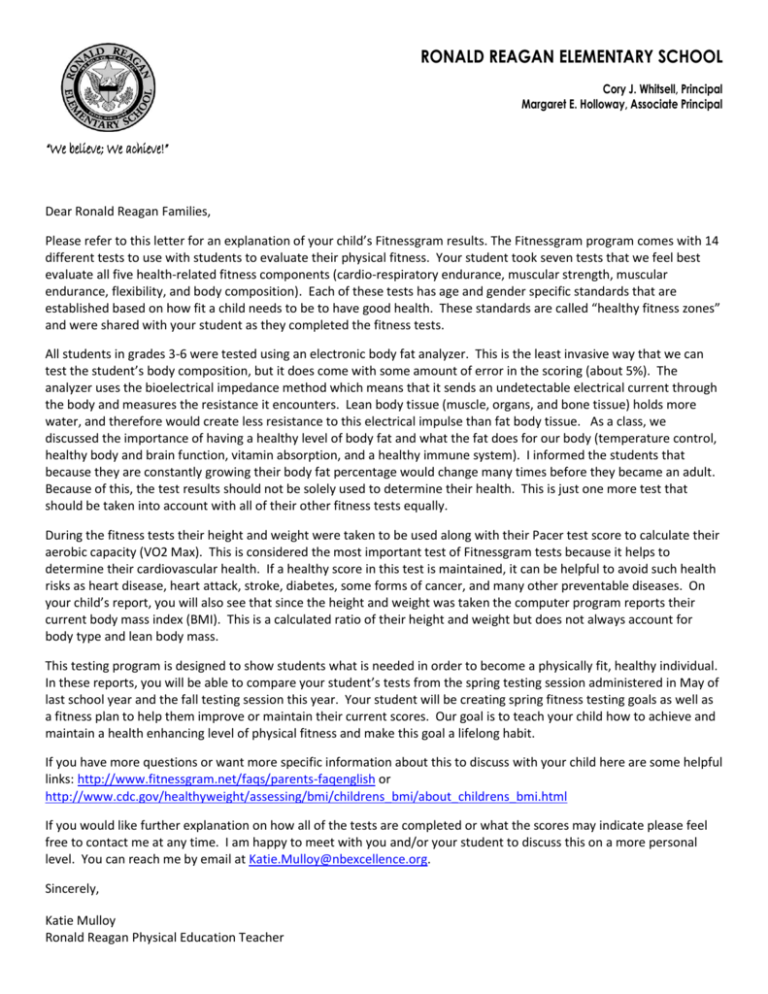
RONALD REAGAN ELEMENTARY SCHOOL Cory J. Whitsell, Principal Margaret E. Holloway, Associate Principal “We believe; We achieve!” Dear Ronald Reagan Families, Please refer to this letter for an explanation of your child’s Fitnessgram results. The Fitnessgram program comes with 14 different tests to use with students to evaluate their physical fitness. Your student took seven tests that we feel best evaluate all five health-related fitness components (cardio-respiratory endurance, muscular strength, muscular endurance, flexibility, and body composition). Each of these tests has age and gender specific standards that are established based on how fit a child needs to be to have good health. These standards are called “healthy fitness zones” and were shared with your student as they completed the fitness tests. All students in grades 3-6 were tested using an electronic body fat analyzer. This is the least invasive way that we can test the student’s body composition, but it does come with some amount of error in the scoring (about 5%). The analyzer uses the bioelectrical impedance method which means that it sends an undetectable electrical current through the body and measures the resistance it encounters. Lean body tissue (muscle, organs, and bone tissue) holds more water, and therefore would create less resistance to this electrical impulse than fat body tissue. As a class, we discussed the importance of having a healthy level of body fat and what the fat does for our body (temperature control, healthy body and brain function, vitamin absorption, and a healthy immune system). I informed the students that because they are constantly growing their body fat percentage would change many times before they became an adult. Because of this, the test results should not be solely used to determine their health. This is just one more test that should be taken into account with all of their other fitness tests equally. During the fitness tests their height and weight were taken to be used along with their Pacer test score to calculate their aerobic capacity (VO2 Max). This is considered the most important test of Fitnessgram tests because it helps to determine their cardiovascular health. If a healthy score in this test is maintained, it can be helpful to avoid such health risks as heart disease, heart attack, stroke, diabetes, some forms of cancer, and many other preventable diseases. On your child’s report, you will also see that since the height and weight was taken the computer program reports their current body mass index (BMI). This is a calculated ratio of their height and weight but does not always account for body type and lean body mass. This testing program is designed to show students what is needed in order to become a physically fit, healthy individual. In these reports, you will be able to compare your student’s tests from the spring testing session administered in May of last school year and the fall testing session this year. Your student will be creating spring fitness testing goals as well as a fitness plan to help them improve or maintain their current scores. Our goal is to teach your child how to achieve and maintain a health enhancing level of physical fitness and make this goal a lifelong habit. If you have more questions or want more specific information about this to discuss with your child here are some helpful links: http://www.fitnessgram.net/faqs/parents-faqenglish or http://www.cdc.gov/healthyweight/assessing/bmi/childrens_bmi/about_childrens_bmi.html If you would like further explanation on how all of the tests are completed or what the scores may indicate please feel free to contact me at any time. I am happy to meet with you and/or your student to discuss this on a more personal level. You can reach me by email at Katie.Mulloy@nbexcellence.org. Sincerely, Katie Mulloy Ronald Reagan Physical Education Teacher


